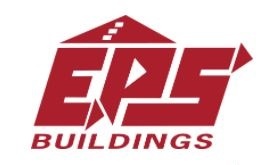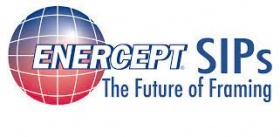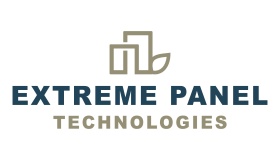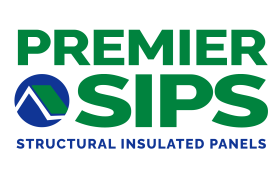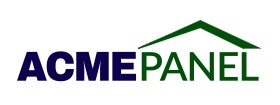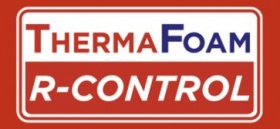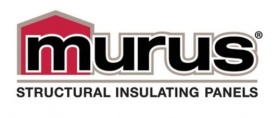
SIPs and LEED
Click here to learn more about the LEED Certification Program.
LEED v4 New Construction (revised 2017)
EA – Energy and Atmosphere
EA 2: Optimize Energy Performance – Maximum 18 Points
The new construction project can be awarded up to 18 points for total energy savings, determined by whole building energy modeling according to ANSI/ASHRAE/IESNA Standard 90.1-2010, Appendix G. Alternately, certain types of commercial buildings can qualify for energy efficiency points by complying with either of the two listed prescriptive standards. By reducing the amount of energy needed for heating and cooling, SIPs contribute to overall energy savings. Space heating and cooling account for 44% of energy use in commercial buildings.
MR – Materials and Resources
MR 3: Building Product Disclosure and Optimization – Sourcing of Raw Materials (Option 2) – 1 Point
If products that meet at least one of the responsible extraction criteria listed (such as Forest Stewardship Council (FSC) certification) for at least 25%, by cost, of the total value of permanently installed building products in the project, 1 point will be awarded. SIPs are available with FSC-certified OSB facings from some manufacturers.
IEQ – Indoor Environmental Quality
IEQ 2: Low Emitting Materials – 1-3 Points
The structural adhesives used in SIP production meet the requirements for low emitting materials defined in EQ Credit 2. Additionally, the OSB used in SIPs meets the requirement that composite wood products used on the interior of the building (defined as inside of the weatherproofing system) shall contain no added urea-formaldehyde resins. Products used on the interior of the building must achieve the minimum threshold level of compliance with emissions and content standards identified to earn the credit. Points are awarded based on the number of compliant categories achieved.
IEQ 3: Construction Indoor Air Quality Management Plan – 1 Point
As a low-VOC product, SIPs assist in reaching the required VOC levels for healthy indoor air quality.
IEQ 5: Thermal Comfort—Design – 1 Point
SIPs create a well-insulated and airtight building envelope that contributes to overall thermal comfort.
LEED for Homes
EA – Energy and Atmosphere
PERFORMANCE PATH
EA 1: Annual Energy Use – Maximum 29 Points
Using the Performance Path, the home is awarded points based on overall energy performance, measured by a HERS Index. A home’s HERS Index is calculated by a certified energy rater and takes into account the insulation, results from a blower door test, HVAC, lighting and other relevant information. LEED points are allocated on a scale ranging from 0 points for ENERGY STAR and 29 points for a net-zero-energy home. Homes must meet ENERGY STAR requirements as a prerequisite for this credit.
PRESCRIPTIVE PATH
EA 7: Air Infiltration – Maximum 2 points
Well-sealed SIP homes have a proven track record of achieving extremely low levels of air infiltration. Homes are awarded points based on their blower door test results, with a maximum of 2 points possible.
EA 8: Envelope Insulation – Maximum 2 points
SIPs make it easy to provide insulation that meets or exceeds the requirements of the 2004 International Energy Conservation Code (IECC) by 5 percent. SIP homes must undergo a visual inspection using the ENERGY STAR SIP Visual Inspection Form to earn this credit.
MR – Materials and Resources
MR 2 Environmentally Preferable Products – Maximum 4 points
If SIPs with FSC-certified OSB are used, the project will be awarded 0.5 point per component (walls, roofs, floors). If the SIPs are manufactured within 100 miles, the project will be awarded an additional 0.5 point per component.
MR 3 Construction Waste Management – Maximum 3 points
Using prefabricated SIPs decreases the amount of onsite construction waste, helping builders qualify for waste reduction points. Waste reduction points are given on a scale ranging from 0.5 to 3 depending on the amount of waste generated per square foot of the home.
MR 4 Material-Efficient Framing – Maximum 2 points
The project is awarded 0.5 – 1 point for each SIP system used: walls, roofs and floors. If SIPs are not used, points can be earned by using other material-efficient framing techniques, such as spacing floor joists greater than 16” o.c.
____________________
Note: This information was kindly updated for SIPA by our friends from Design Management Services, a world-class technical LEED Documentation Management, Green Building Consulting, and Corporate Sustainability Consulting services company working with an array of Corporate, Private and Commercial Business clients, as well as Federal, State and Local Agencies and Municipalities.
Design Management Services
South Florida – New Jersey
(786) 522 - 1183 South Florida
(732) 588 - 0636 New Jersey
(954) 993 - 1555 Cell
www.designmanagementservices.com


